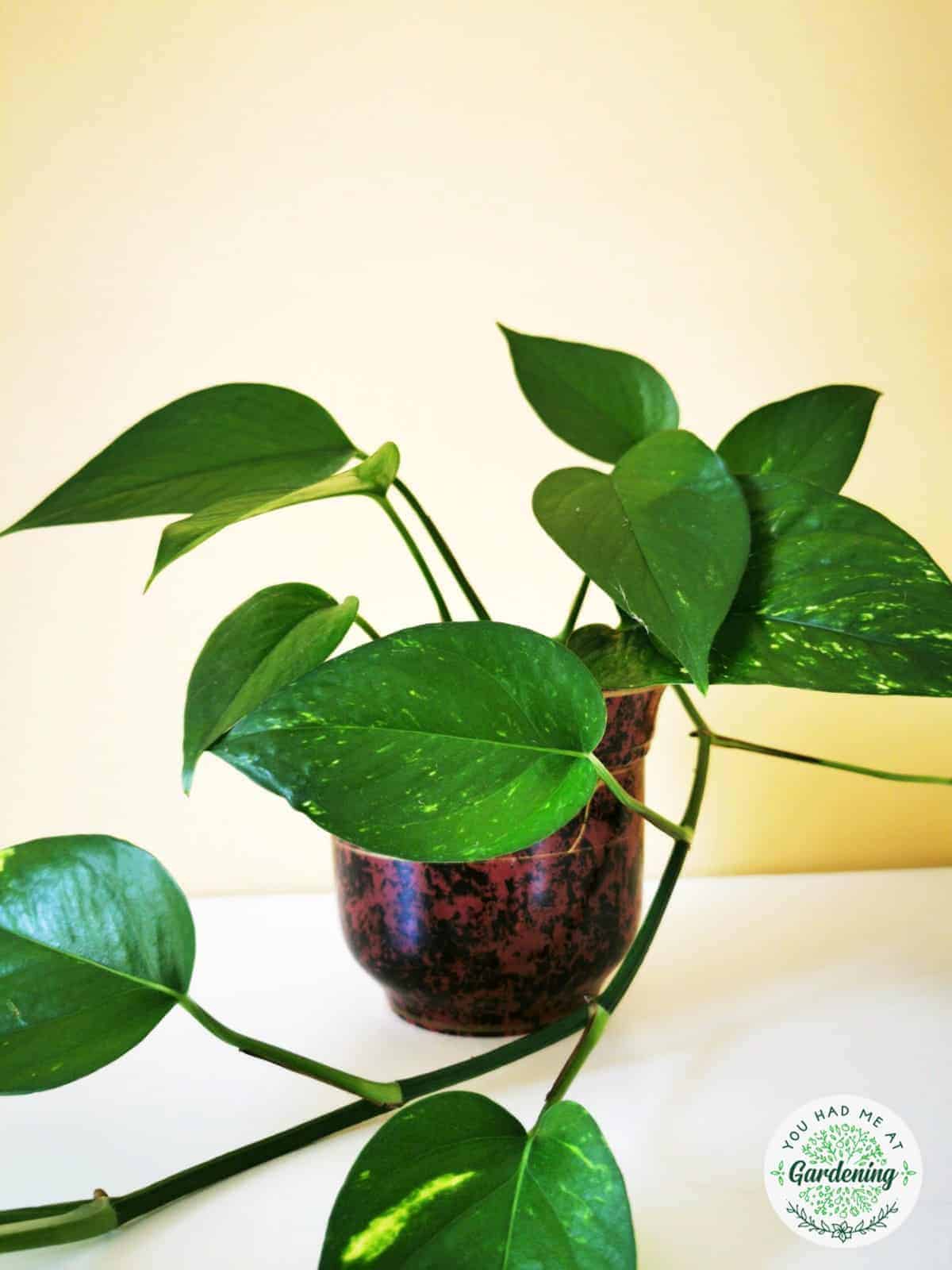Table Of Content

Featuring a range of bright colors in their patterned foliage, never allow your coleus’ soil to dry out completely but keep it consistently moist, not soggy, throughout the year. Preferring high humidity, place your coleus on a pebble tray or in a bright, steamy bathroom to keep it looking its best. Super simple to care for, air plants look lovely when hung in hanging arrangements or anchored to driftwood. Just be sure to keep these little plants in bright, indirect sunlight and mist them occasionally, if you keep them in humidity-poor environments. Most house plants are tropical or desert plants used to warmer, more humid or drier conditions than we can offer them in our gardens.
Plant Index: A-Z List of Common Houseplants
Arrowhead vine (Syngonium podophyllum) gets its name from the triangular shape of its green leaves. You can find varieties with variegated leaves or even bronzy-green with pink tones (you might also see it sold as Nepthytis). Young plants form a mound about a foot high, but stems begin to vine as they mature, so you can grow them upright if you give them support or let them trail in a hanging basket. The interesting shape of the leaves and trailing stems give any room a tropical feel. Peperomias (Peperomia spp.) are a diverse group of small, easy-care houseplants with waxy and often highly textured leaves.
Satin Pothos
The gel inside aloe vera leaves has many benefits for the skin, but the plant is toxic to humans and pets if ingested, so it’s important to keep it out of reach. While Aglaonemas are generally low-maintenance plants, there are a few things to keep in mind in order to keep them healthy. It is important to water the plants regularly, as they will quickly dry out if they do not have enough moisture. Orchids have a reputation for being difficult to care for, but with proper knowledge and technique, they can thrive as houseplants. Nevertheless, with proper care, these plants make a beautiful addition to any indoor space. Regardless of your circumstances, this list of common houseplants will have the right set of plants for you.
Golden Pothos (Epipremnum aureum)
These leaves tend to fall down in layers, creating a dense appearance and blocking sight. They particularly like moist soil, often to the point of daily watering in warmer weather, and do well in both low and moderate light. A rugged houseplant that’s native to the deserts of Mexico, ponytail palm (Beaucarnea recurvata) is a drought-tolerant plant that's easy to grow. It has a thick trunk topped by an umbrella of thin, strappy leaves, giving it a unique and visually appealing appearance, says Hancock. With a reputation for being finicky, this cold-sensitive rainforest native needs just the right conditions to thrive indoors.
The name comes from the small plantlets, which look like spiders dangling down from the tips. Rubber plants have unusually thick and shiny leaves, which help resist browning and discoloration from chemicals in tap water. They can grow extremely large without pruning, but regular tending will encourage healthy growth and limit their size to whatever matches your room.
Our pick of the 10 best indoor plants
The Best Plants for the Bedroom (Hint: It's All About Air Purification) - Architectural Digest
The Best Plants for the Bedroom (Hint: It's All About Air Purification).
Posted: Tue, 23 Apr 2024 21:03:04 GMT [source]
It produces beautiful white blooms that are contrasted by glossy, dark evergreen foliage. Though it has a reputation for being high maintenance, the scent and beauty of gardenias make the work well worth it. Crotons (Codiaeum variegatum) makes a show-stopping houseplant because of its variegated and vivid leaves that come in varying combinations of green, yellow, red, orange, and purple. Peace lily (Spathiphyllum sp.) is a popular option because it’s one of the relatively few houseplants that reliably produces showy flowers indoors.

BEST INDOOR PLANTS FOR MEDIUM LIGHT
For instance, you can check the latest price here on the lemon and lime version from the picture above. Although technically a flowering plant, most Schefflera kept indoors won’t bloom. It starts to wilt slightly when it needs more water, which makes it reasonably communicative for a common houseplant. Schefflera prefers bright light but may need a little more shade in summer. Peperomia is ideal for small spaces because they almost never grow more than a foot and a half tall. They enjoy higher humidity and occasional bits of fertilizer but otherwise thrive in most areas.
You can find varieties with green leaves adorned in bold stripes ranging from silver to red. When you picture a houseplant, the pothos, or Epipremnum pinnatum, is likely what comes to mind. Also known as devil’s ivy or golden pothos, the plants feature vibrant heart-shaped leaves that may be green or marbled green and yellow. They’re easy to grow, needing only indirect sunlight and infrequent watering. Research shows that the plants can lower indoor ozone levels, which can make it easier to breathe and reduce your risk for respiratory ailments, as well as remove VOCs from the air.
English ivy
It may be a little challenging to keep rosemary thriving during the winter months, as the plant needs lots of bright sunlight to do well. But it's a plant that tolerates drought, so err on the side of underwatering your rosemary. Dumb cane plants are prized for their intriguing, patterned foliage, and their relatively easy-care nature.
These plants are pretty different to grow than most indoor plants, as they do not require any soil at all. Besides, their leaves are shaped like the slender tentacles of a sea creature or an alien, making them truly peculiar. There are various species of air plants, having silver or green foliage and different tolerance to environmental conditions. These plants need as much bright, indirect light as you can provide them with, but they will survive in full shade as well. However, they’ll grow and bloom slower without proper lighting conditions.
“I think they’re having a resurgence, especially for contemporary interiors,” says Schrader. With sword-shaped leaves winding gently from the soil like charmed snakes from a basket, this indoor house plant strikes a lovely balance between order and chaos. Alocasia cuprea bears large, leathery heart-shaped leaves in a variety of colours. Grow in bright light to partial shade, with a good degree of humidity - a bright bathroom is ideal.
Be sure to plant your aloe in a well-draining soil suitable for succulents and cacti and allow the soil to dry out completely between waterings. Aloe can go several weeks to several months without watering; however, if your aloe’s leaves start to feel a bit flat, your plant could use a drink. It bears small, sharply pointed, toothed leaves in blue-green, with reddish tips. Grow in bright light and water regularly, reducing watering in winter. Snake plants, spider plants, rubber plants, peace lilies, ferns, and English ivy are some of the best indoor plants for boosting oxygen levels and purifying the air. This handsome plant has glossy, leathery leaves that have made it popular for decades.











